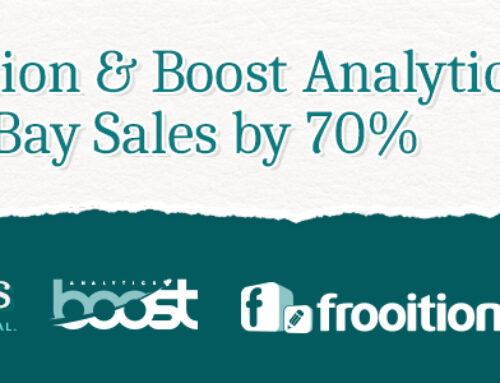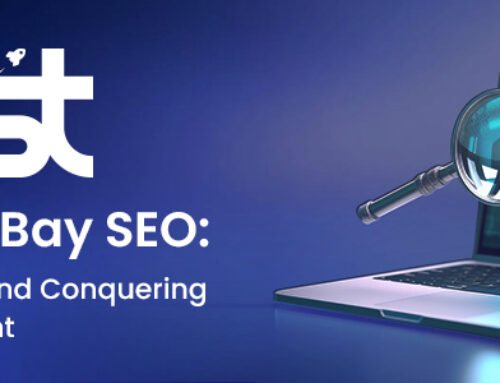
With more and more brands and retailers selling online, customers are spoilt for choice. If you want them to choose to buy from you, it’s essential to distinguish your business from the competition.
Positioning a business in its own unique space can be achieved using a combination of two approaches. A business can differentiate based on:
- Products they offer
- The audience they target
Overheads of traditional retail would make operating in a small niche unprofitable. However, in the digital era, it’s entirely possible to work with clients around the globe. There are enough customers for even the smallest niche sellers to build a thriving business. It’s just a case of attracting them.
Building a brand
A brand is more than a logo, colour scheme or set of fonts. A brand is the personality of a business. While value proposition communicates what the business will bring to customers, the brand expresses their personality.
Brand should influence not just marketing collateral, but also how you interact with clients. It defines the tone of voice of the business. It should influence everything from how staff answer the phone to the way your product descriptions are worded.
A business’ brand is also a crucial component in attracting quality staff. For many prospective employees, finding a company culture where they feel valued and welcomed is just as important as salary. Employees want a place where they feel at home.
The level at which a business invests in the creation of its brand is of course proportional to their size. However, at its most basic level, a brand consists of two elements, a personality and a set of principles.
Establishing a Personality
In most cases, a brand’s personality is influenced by two factors; target audience, and company culture.
It’s hard for a business to adopt a personality that is radically different from the culture of the organisation. If the internal culture is naturally informal, it’s hard to present a formal image to the world. Therefore, a brand’s personality should genuinely reflect the existing culture.
Consider Innocent Drinks, their unique tone of voice is notorious in the marketing world. Informal and light-hearted, they often post quirky puns and blog posts. But the reason why Innocent’s tone of voice is so successful is because it is authentic. Being quirky and humorous, is part of their company culture and how the company began.
Conveying a personality makes any brand more likeable and approachable. You can apply this to your e-commerce business. Just consider the following questions:
- Is there something that makes our business unique?
- What do we stand for?
- What kind of culture do we promote?
- Who is our audience?
Taking these answers on board, you can decide on which unique qualities you want to portray through your communications.
Identifying a Set of Principles
The second crucial component of brand identity is identifying a set of principles that define how you do business. Some of these will be general (such as a desire to be ethical), while others will relate specifically to the nature of the work and services offered (such as the desire to exclude SLS from skincare).
One of the best ways to establish a set of principles is to look at other companies for inspiration.
Principles are a good way to show customers how your business is different from its competition. However, this often doesn’t happen. That’s because many company principles are so generic that they are essentially meaningless. For example, it’s not unusual for principles to include statements such as “we always put the customer first.” Statements like this do not set a business apart, because no business would claim to do otherwise.
A principle should make a statement with which some people could potentially disagree. Otherwise, it says nothing. For example “we only use recycled delivery packaging” makes a statement because other competitors may not be willing to make the same commitment.
A set of well-written principles will draw like-minded people to your store. Both prospective customers and employees who share a similar ideology will be attracted to the company behind these principles. They act as a way of matching the right customer or employee with the right business.
Creating Your Marketing Collateral
With values and personality established, the brand then needs to be visualised in terms of logo, colour, typography, tagline, and any other visual identity elements needed.
Brand is the basis of all marketing collateral. It should inform elements like:
- Website design
- Printed material and packaging
- Social media
- Advertising
However, for an e-commerce business, the company website will be by far the most important marketing asset. It showcases the company’s inventory, but should be more than a catalogue.
An e-commerce website exists to answer common client questions:
- Can this company deliver on time?
- Do I feel comfortable buying from this company?
- How will this company treat me as a customer?
- Why is this company different from the others being considered?
It communicates three key messages:
- Ability to deliver
- Brand personality
- Brand values
Demonstrating Ability to Deliver
To demonstrate an ability to deliver, the site needs to outline their delivery process and list different options. This is not enough though. Customers will need more to help them trust in your ability to deliver on time. Social proof is the best way to reassure customers that you can provide fast and efficient delivery. However, if you are just starting out and don’t yet have social proof, opting for a trusted delivery service can help. Also, make a point of the importance of delivery for your brand. You could choose to offer guaranteed delivery.
Online florists Bloom & Wild have included this graphic explaining their delivery process in their homepage to combat delivery based objections.
Showing Company Personality
Customers are seeking to judge whether a store has a similar attitude and outlook to their own. That’s why it’s critical to ensure that company personality is expressed throughout your website. Site copy, visuals, and your about page will impact a customer’s opinion of your store.
Outlining company values
Finally, a business’ website should showcase its values, as these are what differentiates them from the competition. It should also, to varying degrees, give customer’s an idea how the seller would go about delivering purchases and dealing with customers.
With a well-defined brand and set of values expressed through a compelling website, your store is now well positioned to start receiving potential customers.







